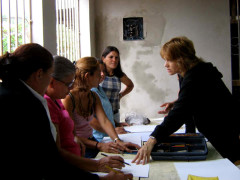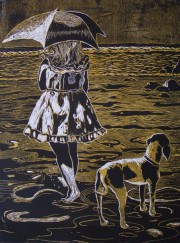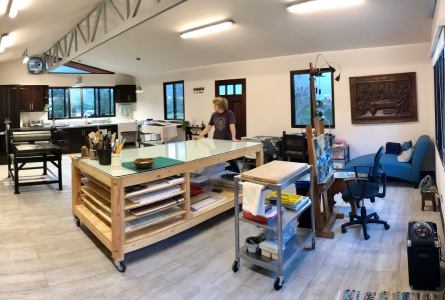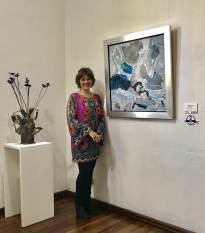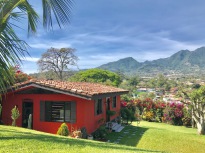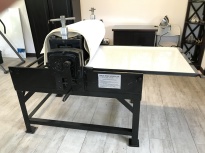Courses
As an artist with professional training, I teach the various art techniques to both novices and advanced students alike. My studio houses a large printing press and classes include inks, painting materials, brushes or other tools specific to the midium.
Courses for beginners through advanced...
The first lines are always the hardest to draw, but with time and some guided practice, it gets easier to draw a clear picture on a piece of paper. Contact me to find out how!
I enjoy giving classes in oil painting and watercolor techniques for more advanced students.
With my access to a well equiped printing workshop, instruction in any of the printing technique listed bleow is also possible.
A glossary of Print Making Techniques: For your understanding...
• Aquatint - Printing Technique capable of producing unlimited tonal gradations to re-create the broad flat tints of ink wash or watercolor
drawings by etching microscopic crackles and pits into the image on a master plate, typically made of copper and zinc. The majority of Spanish artists Goya’s (1746-1828) graphic works were done using
this technique.
• Collograph - Printing technique in which proofs are pulled back from a block on which the artwork or design is built up like a
collage, creating a relief.
• Drypoint - Printing technique of intaglio engraving in which a hard, steel needle incises lines on a metal plate, creating a burr that
yields a characteristically soft and velvety line in the final print.
• Engraving - Printing technique in which an intaglio image is produced by cutting a metal plate or box directly with a sharp engraving
tool. The incised lines are linked and printed with the heavy pressure.
• Etching - Printing technique in which a metal plate is first covered with an acid-resistant Material. Then it is worked with an etching
needle to create an intaglio image. The exposed metal is eaten away in an acid bath, creating depressed lines that are later inked for printing. This technique was thought to have been developed by
Daniel Hopfer (1493-1536). Etching surpassed engraving as the most popular graphic art during the active years of Rembrandt and Hercules Segher in the 17th century, and it remains one of the most
versatile and subtle printing techniques today.
• Iris or Giclee - A computerized reproduction technique in which the image and topology are generated from a digital file and printed by a
special ink jet printer, using ink, acrylic or oil paints. Giclee printing offers one of the highest degree of accuracy and richness of color available in any
• Mezzotint - (mezzo = half and tinta = tone), a reverse engraving process used on a copper or steel plate to produce illustrations in
relief with effects of light and shadow. The surface of a master plate is roughened with a tool called a rocker so that if inked, it will print solid black. The areas to be white or gray in the print
are rubbed down, so as not to take ink. Messotint was widely used in the 18th and 19th centuries to reproduce portraits and other paintings, but became obsolete with the introduction of
photoengraving.
• Monotype - One-of-a-kind print made by painting on a sheet of metal or glass and transferring the still-wet-painting to a sheet of paper
by hand or with an etching press. If enough paint remains on the master plate, additional prints can be made, however, the reprint will have substantial variations from the original image. Monotype
printing is not a multiple-replica process since each print is unique.
• Xylography - The art of engraving and making black and white or color prints from natural grained wood or board with carved pattern.
• Enhanced - The artist goes over the edition repainting or touching up special areas.
• Edition - The authorized number of impressions produced. The edition includes all numbered pieces, artist’s proofs (a.p.) hors de commerce
examples (H.C., i.e. outside of usual commerce) and printer’s proofs (P.P.).

